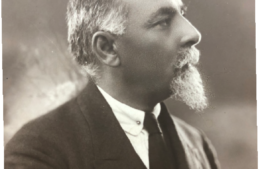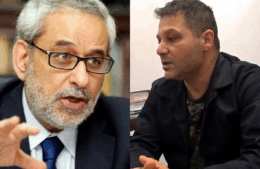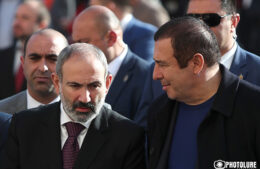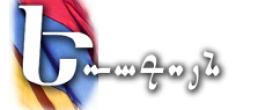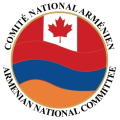The Great Loss of the Armenian Clergy During the Armenian Genocide – V. Rev. Fr. Shavarsh Sahagian
- (0)

By Archbishop Papken Tcharian
The series of articles, which will be presented to our readers, are written by Archbishop Papken Tcharian, and translated by Tamar Topjian Der-Ohannessian.
The book, “The Great Loss of the Armenian Clergy during the Armenian Genocide” was published in 2009, by the generous donation of Mr. and Mrs. Levon and Tamar Der-Ohannessian.
The articles which will be featured in the coming days, are from the Vartabedagan thesis of Archbishop Tcharian, and it is dedicated to the 90th anniversary of the martyrs of the Armenian Genocide.
In his thesis, Tcharian writes, “The enemy, in his cruelty, ruthless and unjust, did not discriminate. He slaughtered the students of Maghakia Ormanian, Yeghishe Tourian and Mekhitar Sepasdatsi, the promising seminarians of Armash and St. Ghazar, who were the true intellectual clergymen, and who shared the fate of their people and their parishes.”
“The catastrophe of April 1915 was a fatal gash in the heart of the Armenian Apostolic Church. Despite of it all, however, the Armenian people and the Armenian Church experienced a new renaissance. … We do not hesitate to call all those clergymen who were massacred during the Genocide of April 1915 martyrs and saints.”
—————————————————
Rev. Fr. Shavarsh Sahagian was born in 1881 in Shabin-Karahissar and baptised as Arshavir. He received his elementary education in his hometown, and later in the National School of Gerassion. He wanted to continue his studies, but the events and the situation during that time forced him to leave his studies and get a job. He continued studying and educating himself at home.
On September 8th 1902 he was ordained deacon by Bishop Yeghishé Tourian. While a deacon, he and his classmates gave speeches at school concerts. As an experiment they started doing research on national and ecclesiastical subjects. They wrote concise papers on ‘Hayeren Kavaraparparner’ (Armenian Dialects), ‘Naregi Madenakidagan yev Keraganagan Arantsnahadgoutiunner’ (The Unique Bibliographic and Grammatic Properties of Nareg), ‘Anavarzetsvo ar Hetoum Tought’ (Letter of Anavarzetsi to Hetoum), ‘Khorenatsvo Tebroutiun’ (The Teaching of Khorenatsi), ‘Dzenentots Kirki Gazmoutiun’ (The Compiling of the Book of Genesis), ‘Podi ar Zakaria Tsaketsi Tought’ (Pod’s Letter to Zacharia Tsaketsi), and ‘Gronagan Tasdiaragoutiun’ (Religious Education).
He completed the academic curriculum on June 19th 1905, and on the Feast of Gatoughigé, he was ordained celibate priest by Bishop Tourian and was renamed Shavarsh.
During 1905-1908, he taught in Armash Seminary, and assumed the post of vice-dean for one year.
In 1906, he received the entitlement to carry the pastoral staff and wear the floral cope from Patiarch Maghakia Ormanian in Constantinople. As his thesis, he submitted a dissertation titled ‘Hay Yegeghetsvo Haraperoutiunnere Asori, Houyn yev Ladin Yegeghetsineroun Hed’ (The Relationship of the Armenian Church with the Syriac, Greek and Latin Churches).
From 1906 to 1907 he worked as a preacher in Holy Haroutiun (Resurrection) Church in Pera and in the church in the village of Yeni.
In March of 1908 he was invited to Bardizag as preacher and principal of the local national schools, but he declined the offer. Instead, he went to Sepasdia in May planning to establish a seminary in St. Neshan Monastery. However, he could not realize his objective due to problems following the declaration of the Ottoman Constitution.
For three years, 1908-1911, he stayed in Sepasdia and worked as principal of the local National Aramian School. At the same time, he assumed the office of diocesan vicar of Sepasdia, twice, when Archbishop Torkom Koushagian, prelate of Sepasdia was away from the diocese.
In 1909 he was elected diocesan locum tenens for the diocese of Shabin-Karahissar and on October 10th 1910, he was appointed preacher for the Armenians of Lowell in America, but he declined both positions.
On September 30th 1910 Catholicos Izmirlian bestowed upon him the privilege of wearing the pectoral cross. On October 25th of that same year he was elected prelate to the diocese of Malatia which he refused once again.
During his tenure as principal, the National Aramian School had its most productive period, due to his persistent efforts. Along with the other schools of the province, Aramian School attained a leading position with its curriculum, its teachers and graduates.
We read the following in ‘Badmakirk Houshamadian Sepasdio yev Kavari Hayoutian’ (Historical and Commemorative Book of the Armenians of Sepasdia and its Provinces):
Thanks to the fervent efforts of the prelate and his ex-student, V. Rev. Fr. Shavarsh Sahagian, the academic level of Aramian School rose to be equal to the government ‘Idadié’ school. Bishop Torkom took charge of the religious courses. V. Rev. Fr. Shavarsh taught history of Armenian bibliography. Taniel Varoujan, of whom we, the Armenians of Sepasdia, are so proud, was invited for the academic year 1909-1910, and lectured Armenian literature, French and comparative constitution, creating a lot of enthusiasm. The staff as a whole consisted of elite individuals.
In 1911 V. Rev. Fr. Shavarsh was elected prelate of Yevtogia (Tokat) and stayed on this job until his martyrdom.
He had a productive diocesan tenure in the diocese of Yevtogia, especially in the ecclesiastical, administrative and religious disciplines.
- Rev. Fr. Shavarsh had great success as an administrator. He created a spirit of cooperation in the national life. He established a friendly relationship with the government and very importantly, he commanded the love and respect of the most important and responsible government officials.
On November 6th 1913 he arranged a diocesan visit with Mehmoud Bey, governor of Yevtogia, and Riza Bey, commander of the armed forces. He visited all the Armenian villages, which were under the jurisdiction of the state of Tokat. He described the whole diocesan trip in the 1913-1914 issues of the Piuzantion periodical.
When he visited eight Armenian villages, which did not have any churches or schools, he recounted:
They have kept their dialect and traditions but are in a very pitiful state, because they are surrounded by nomadic, semi-civilized races and other hostile elements. For a long time this region was a famous lair for thieves, who were a threat to our peaceful and sedentary people. To be fair, I must add that the Turkish and Greek peasants were also tormented by these bandits, who found refuge with acquaintances in the winter, and who, in spring and summer, populated the thick and vast forests extending to Niksar, Reshadiye, and all the way to the Black Sea.
Ayvaza, one of the Armenian villages of that region, was particularly subject to unspeakable atrocities. For more than twenty years, they had been the target of all kinds of violence from a bey which had become the unofficial owner and proprietor of the region. He always demanded tax from the Armenians and declared that all the land belonging to the Armenians actually belonged to him. He tried to transfer the deeds to his name and the Armenians could not claim ownership to the land they had cultivated with their own hands. They suffered unspeakable ordeals. Seven to eight Armenian youths fell victim to these lawsuits by either being thrown in jail, or being fatally shot along roadsides.
Watching this depressing situation going on for years, V. Rev. Fr. Shavarsh appealed to Mouharrem, governor of Sepasdia, and Memdouh Bey, governor of Yevtogia (Tokat) on November 8th 1913 and explained the problem to them. He succeeded in improving the situation. He also got official deeds for the land belonging to the Armenians.
During his series of diocesan visits, he went to Holy Neshan or Hovhan Vosgeperan (John Chrysostom) Monastery on November 7th 1913 on a pilgrimage. According to V. Rev. Fr. Shavarsh Sahagian, this famous monastery had a very interesting past, full of tradition and replete with accounts of miracles. The cathedral rose among the multi-roomed buildings allocated to pilgrims and clergy. After entering through its gate, the visitor found himself in a nice church. This cathedral was built by Patriarch Hagopos in 1842. The grave of Hovhan Vosgeperan (John Chrysostom) was in this monastery, thus it had become a pilgrimage site for the whole province. Here is what V. Rev. Fr. Shavarsh wrote: “The pilgrimages made to Vosgeperan’s grave are universal. Believers from all races and creeds, from faraway and nearby cities and villages come to this site looking for solace.”
During his diocesan visits, he saw the condition of the Armenian-populated villages and provinces and he addressed the problems with enthusiasm. He revived the monasteries and churches and appointed committees to be in charge.
During his diocesan tenure, he worked diligently to improve the academic level of the diocese. With his initiative, he raised the budget for education. He went all the way to Sepasdia to see the governor and made the curriculum of the national schools equivalent to that of the government schools. He built new schools in the Armenian-populated villages, and revived and upgraded the schools which had remained closed.
We have the following information in the book, ‘Badmoutioun Yevtogio Hayots’ (History of the Armenians of Yevtogia):
- Rev. Fr. Shavarsh improved the academic life in the city and started kindergartens in the villages. He also reformed already existing schools. In 1914 he undertook the construction of a kindergarten on the land adjacent to St. Sdepanos (Stephen) Church belonging to the community. He also appealed to the immigrants from Yevtogia living abroad for financial aid, because more than 1,200 gold-coins were needed to build the prelacy, the community kindergarten and the lecture-hall/theater. A large number of them sent significant donations…
The prelate’s activity had its impact… Mouhammed, the governor of Sepasdia, allocated 250 gold-coins from the gubernatorial budget for the construction of the new kindergarten and an additional twenty coins for the library of the Community School. This concession was made presumably ‘because of the special pleas of the prelate and because he was on good terms with the government.’
Moreover, as a result of the prelate’s efforts, the gubernatorial leadership gave permission to get the lumber required for the intended construction of schools in the Armenian villages from the state-owned forests, free of charge.
All these show V. Rev. Fr. Shavarsh’s wise and bold administrative abilities, for which he enjoyed great respect and love from his parishioners. In 1914 the Diocesan Representative Assembly of the diocese of Tokat in Yevtogia unanimously rewarded him with the certificate for episcopal ordination as an appreciation of his extensive achievements. Unfortunately, however, he never reached that rank because of the great treachery organized by the Turkish government.
The Ottoman Constitution was declared and nothing was done about the expected reforms. On the contrary, the unfair stance and vengefulness of the Turkish government became more obvious.
The following passage taken from V. Rev. Fr. Shavarsh’s report sent to the patiarchate of Constantinople shows a clear picture of the situation:
Around midnight on December 20th a policeman called Ziletsi Hasan brutally attacked an Armenian youth, cursed his family honor, nationality and religion, and dragged him to the police station. We immediately informed the governor about the incident and he ordered a thorough investigation. The outcome was that the next day the governor said that the policeman encountered defiance and had selflessly done his duty. Consequently, he deserved to be thanked. Despite our insistence, we could not confirm that the investigation had not been done fairly, that our information was from eye-witnesses, that he was deceived, etc.
He insisted on defending the policeman. A few days after this incident, in the evening of December 26th, my dining-room window, where I usually sit, was smashed with rocks and explosives. I was confident that this incident could not be an accident and so I reported it to the governor, who expressed his regret for what had happened, and tried to reassure me that it must have been an accident. When I insisted, he told us that there were directives to prevent such incidents from happening again. The next day, two respectable Turks came and told us that the crook who had smashed the window was non other than the policeman, Ziletsi Hasan, who had wanted to intimidate us in this manner. They also gave us authentic information about some of his depraved and vile actions, exposing some of his colleagues in the police-station as his accomplices. The mentioned Turks repeated these statements under oath in front of officials and the documents were presented to the governor. Gradually, proof from other witnesses confirmed the facts, and other corruptions were revealed… It became evident that the policeman who came to investigate the broken window and to prepare a report was Ziletsi Hasan himself, who stated in his report that the window of the mentioned house seemed to have broken by accident. If, on the other hand, it was broken intentionally, then, according to the results of the investigation there are no clues as to the identity of the crook. It was the criminal himself who had undertaken the investigation, had obtained the documents and had declared that the villain was not apprehended. The governor was dumbfounded in view of all these facts, and had Hasan imprisoned. He also relocated all the employees of the police-station, presuming to have thus purged the system.
These are the kind of people who are in charge of the security of the life, honor and possessions of our province. It is not superfluous to add that the mentioned Ziletsi Hasan had been expelled from Zillé, Trkhalé and Tokat Merkez, for his illegitimate and immoral actions. More than five cases had been found about him, and yet he was still kept in his office as an overseer of security.
The same vindictiveness persisted even after the adoption of the plan for Armenian reform. The ruling class of the Turkish government tried to oppress the Armenians economically. Out of hatred and malice, they burnt and destroyed all the Armenian businesses of Yevtogia, as well as the marketplaces of Marzvan, Amasia, Sepasdia and Diarbekir.
The author of ‘Badmakirk Houshamadian Sepasdio yev Kavari Hayoutian’ (Historical and Commemorative Book of the Armenians of Sepasdia and the Provinces) has written as an eyewitness:
The massive fire in the Baghdad Jaddesi marketplace in Yevtogia, which was the trading center of the city, took place on May 1st 1914. The flames rose simultaneously from various places. A large, aimless crowd was gathering, and the Turks waited for an excuse to start looting. Armenian businessmen ran around frantically, begging for help to staunch the conflagration. No firemen were in sight. It was evident that the water of the city was cut on purpose. At that critical moment, the indomitable prelate of the Armenians, V. Rev. Fr. Shavarsh, appeared like a hurricane, with a whip in his hand. That night he was in Hovagim Anna Monastery, an hour and a half away from the city. When he saw the red flares rising from the city, he immediately jumped on the back of his ‘sevoug’ stallion and raced to the city. He managed to have the water back, and cracking his whip, he pushed the firemen to work. Thanks to the encouraging measures he undertook, he succeeded in saving a few shops belonging to the community from the blaze.
- Rev. Fr. Shavarsh wrote in his letter to the editor of Dadjar daily, dated May 1st 1914:
A fire broke out in Baghdad Jaddesi, the most affluent section of the city. It lasted for twenty-one hours. Eighty-five shops and businesses, forty-five houses and three khans were burnt down. There was a financial loss of 150,000 gold-coins. A khan belonging to the community was damaged partially and a school was completely burnt down. The people are in mourning.
On August 1st 1914 the First World War broke out, and this gave the Turkish government the excuse to implement its plan for ‘exterminating the Armenians.’ The Armenians of Yevtogia (Tokat) lived the most miserable days of their lives just like all the Armenians of Turkey in the provinces.
On July 21st 1914 the Turkish government declared military conscription. All men between the ages of 18 to 45 were drafted without exception. The Armenian intellectuals, writers, teachers, businessmen, all the way to the simple craftsmen served in the army as soldiers.
Conscription was followed by confiscation of personal belongings for ‘military needs.’ Every Armenian willingly gave anything the government demanded. The patriarchate of Constantinople had sent directives to all the prelates to advise the people not to show any resistance, and to give everything the government demanded. But the demands changed to oppression and all the horses, carriages and livestock of the peasants were requisitioned. Even V. Rev. Fr. Shavarsh’s ‘Sevoug’, which he was so fond of, was taken away.
Shavarsh Vartabed, anxious about the situation, tried to woo the Turks. He showed them friendship, organized functions for them, but all his efforts were futile.
After the confiscation of goods, the weapons of the Armenians were collected. It was proclaimed that the people had to give up all their arms to the authorities. The proclamation was supposedly aimed at everyone, but in fact it did not affect the Turks, and only the Armenians were targeted.
- Rev. Fr. Shavarsh Sahagian invited the members of the national leadership to a meeting, prior to giving up the arms. The meeting took place in St. Sdepanos (Stephen) Church to decide whether or not to give up the weapons and the defecting soldiers. The prelate and Mr. Arabian unequivocably said: “If we relinquish our weapons, they will kill us with our own guns.” Neither the prelate’s, nor Arabian’s words had any effect, because the council ‘elders’ decided to give up the weapons. The people complied and brought all the weapons they possessed to the prelacy, which in turn would pass them on to the government.
This was followed by searches. Every Armenian home was searched under the pretext of looking for guns and soldiers. Thus, there was widespread terror everywhere. All the history and song-books of the Armenians were confiscated. V. Rev. Fr. Shavarsh hid all his books so as not to give the Turkish soldiers an excuse to search the prelacy and his house.
Gradually, the Armenian soldiers were persecuted, despite their devotion to the country. The number of arrests and imprisonments increased daily, and the prisoners were subjected to excessive torture.
The government was dissatisfied with the requisition of arms, because the Armenians had given up their useless weapons only. So, the governor of Sepasdia, Mouhammed, came to Yevtogia and had a meeting with V. Rev. Fr. Shavarsh.
In ‘Badmoutiun Yevtogio Hayots’ (History of the Armenians of Yevtogia), we have the following information about that meeting:
Mouhammed, the governor of Sepasdia, came to Tokat and had a meeting with V. Rev. Fr. Shavarsh. He had already met him once and had recommended that the people must give up their arms. The people had only relinquished their unusable guns. This time the governor passed through Tokat allegedly going to Samson and asked the prelate whether they had given up the guns. V. Rev. Fr. Shavarsh replied: “We already gave up the guns we had.” Mouhammed replied harshly: “Mourakhas Effendi, I want the guns which you have received. Do you understand?” So, the fact that guns had been brought to Tokat upon the recommendation of the party activists for self-defense had been betrayed.
The hatred towards V. Rev. Fr. Shavarsh was great because he was a warrior as much as he was a clergyman.
One day, the governor of Yevtogia sent a message to V. Rev. Fr. Shavarsh informing him that he was going hunting and whether the priest would like to come along. V. Rev. Fr. Shavarsh accepted and they went to Ardova. The Muteserrif, who had his rifle on his shoulder, addressed the priest saying: “Mourakhas Effendi, they say that you are a very good marksman. Here, take my gun and shoot those birds.” The priest took the gun and using his horse as support, shot a bird. The governor ostensibly praised the prelate with exclamations of ‘well done!’, but must have actually resented the religious leader of a subject community for being such a good marksman.
The government realized that the Armenians had not relinquished their weapons, but had hid them. So, on May 13th 1915 political leaders, prominent and talented intellectuals and nationalistic activists were arrested in large numbers.
- Rev. Fr. Shavarsh was completely demoralized and concerned. Hovhannes Yortanjian – whom Shavarsh had hidden in the prelacy as a refugee – has recounted the incident in his notes, which we have taken from ‘Batmoutiun Yevtogio Hayots’ (History of the Armenians of Yevtogia). He had gone to St. Sdepanos (Stephen) Church one Sunday after the war, and although 35 years have passed from that day, he has not forgotten the appearance of the prelate and his sermon.
- Rev. Fr. Shavarsh was playing with the worry beads in his hand and he said angrily: “Nowadays, the words of a crook overshadow the words of a hundred good men. I have so much to tell my people, but I am afraid of them. My voice does not reach the Sublime Porte in Constantinople, whereas the local commander is the king of the city. He has the last word, and whatever he says counts.”
Meanwhile, on Sunday May 31st 1915, which was the last Sunday before deportation, V. Rev. Fr. Shavarsh said in the cathedral:
The governor called me. When I went to the headquarters, I saw there the muteserrif, the mufti, the judge, the kaymakam, etc. who had convened for a gubernatorial meeting. They proposed to me to give up the guns and the defectors. They told me, ‘The Armenian people will listen to you. You have to talk to the people. You can help them or harm them. Everything is up to you.” Everyone at the meeting stood up and swore on their honor and said, “If you relinquish everything, nothing will happen to your people, otherwise it is up to you.”
We do not believe in the oath of the Turks. But whether we resist, which means we revolt, or not, we are doomed. The meeting decided that we should give up the guns and the defectors. However, I do not know if I am helping my people or harming them.
He continued his sermon and said:
Governor Mouhammed Bey covertly met with me three times and pointed out to me the soldiers flooding into the city. He said that if the guns and the defectors were not relinquished, then one morning every Armenian home would be surrounded by a hundred soldiers, the defectors would be arrested and the guns would be found. In that case, the life of the Armenian people would be in danger. The assembly has decided to give up the defectors and the guns, because they think that if we are treated kindly for having obeyed the government, or if the damage is minimized by even one per cent, then that would be worthwhile. But I have no hope. Whether we curb the destruction or not, I have no words of consolation for my people because we are doomed. I have only one comforting remark. We do not have Armenians only in Turkey. There are also many Armenians abroad. Next year we will see the maps changed, and it will be those Armenians living abroad who will come and enjoy this land. We will not be around. I will now go and relinquish the defectors.
- Rev. Fr. Shavarsh wanted to convey to the people that the leaders of the community had decided to surrender the guns and the defectors, but that he did not agree with them. He wanted to resort to self-defense and die honorably, but as the prelate, he was implementing the decision of the assembly.
On June 3rd 1915 V. Rev. Fr. Shavarsh was arrested in the prelacy hall, while in a meeting with the members of the assembly. A few policemen suddenly came in and told the prelate that the governor wanted to see him.
We read about this in ‘Badmoutiun Yevtogio Hayots’ (History of the Armenians of Yevtogia).
The policemen and the military police entered the prelacy and searched it. They were looking for guns, because the prelate always carried one. They took away the unfortunate prelate. V. Rev. Fr. Shavarsh said to Rev. Fr. Hovsep, who was there at the time: ‘They are taking me and they will kill me. There is no return. Good bye.’ “Reverend Father, they can’t do anything. Don’t be scared,” said the priest and slowly came out of the back door of the prelacy and ran away.
When V. Rev. Fr. Shavarsh appeared in front of the governor, he protested very strongly about the arrests made during the requisition of the weapons. The governor however, informed him that he had to dispatch him to Sepasdia on an urgent matter.
We read in ‘Badmoutiun Yevtogio Hayots’ (History of the Armenians of Yevtogia):
When they took the prelate to the governor’s headquarters, they showed him a photo of Armenian school-boys doing physical exercises around Hovagim Anna Monastery in the presence of the muteserrif, the local superintendent, Osman Bey, and the prelate. They regarded the pieces of wood in the children’s hands to represent guns and they saw the picture as military training. They used this as a pretext to accuse the prelate and question him.
First, they pointed to the muteserrif in the picture and asked who he was. V. Rev. Fr. Shavarsh said it was the governor. When they asked the same question pointing to him, the prelate said that it was him. The major then slapped the prelate, who confronted him and said, “You have no right to hit me.” They pushed the prelate and shoved him down the stairs. V. Rev. Fr. Shavarsh was young and strong. He defied the slovenly Turk and said to his face: “Look at me! I will not give in just to save my soul.”
Later, they took the prelate to Sepasdia… towards Golgotha, to serve him the poisonous chalice of torture and death.
This is how Teotig has told about the prelate’s martyrdom, in his book, ‘Koghkota Turkahay Hokevoraganoutian’ (Golgotha of the Turkish-Armenian Clergy):
…The employees waiting on the sidelines surrounded the prelate at a given signal. They searched him and dragged him down the stairs with offensive gestures. They put him in the same carriage, under the watch of four policemen, and they allegedly set out towards Sepasdia. It was getting late. Throughout that arduous journey the threatening expression of the armed men around him had much to say about the impending danger. Finally, unable to control his emotions, V. Rev. Fr. Shavarsh called out in Armenian to the coachman, “Go on! Urge on the horses! The faster you make them run, the faster you will bring me to my grave… I have guessed from their behavior that our time is limited… Don’t worry about me! Just think of saving yourself…”
The poor coachman tried in vain to calm him, even though he was very troubled himself. The carriage had rolled on for two hours and had reached ‘Giun –Geormez’ spring when they were stopped by policemen. “Get down!” roared one of them. The priest was a little slow because he was trying to put on his shoes, when a whip cracked across his cheek, accompanied with a holler: “You are going to die soon, and you are still trying to put on your shoes…” He started walking in his socks, insulted and distraught, surrounded by three men. The fourth person, an old man, stood guard over the coachman. They made him lie down on the brink of the deep ravine and drew the sharpened blade of a knife across his throat. Then they kicked the bleeding body of the martyred clergyman down the ravine.
In ‘Badmoutiun Yevtogio Hayots’ (History of the Armenians of Yevtogia) his martyrdom is described in a different manner.
While the prelate was being taken to Sepasdia in a carriage, he said to the coachman, “They are going to kill me. If you can save yourself, do it. Do not lose a minute for my sake. Try to save yourself.” Then he added, “I am sorry for being instrumental in betraying the Armenian defectors. You better save yourself; otherwise they will kill you too because of me.”
Along the way, the prelate started singing ‘Lousin chegar, mout kisher er’ (There was no moon. It was a dark night). Nazarian, the coachman, said that V. Rev. Fr. Sahag Odabashian had sung the same song on this same road, before his martyrdom. And now, it was the prelate’s turn.
When they reached the place near the Giun Geormez spring called Kezen Enish – meaning red slope according to Patriarch Torkom – far from Yevtogia, the four policemen went away, because a group of Chetes was approaching them. They aimed their guns towards the priest’s carriage. They surrounded the carriage and shot V. Rev. Fr. Shavarsh.
The story goes that they had cut off the priest’s head and had brought it to the government offices to show that they had indeed killed him.
The body was left unburied. Then a hoja buried him, because he thought, regardless, this was still a clergyman.
The assasins had said, “We have killed so many men, but we have never seen so much blood.”
This was the life of a wise, hard working and promising clergyman, his administrative work and his martyrdom alongside his people. In his own words, “Where the flock, there, too is the shepherd.”
One year prior to his martyrdom, with a strange foresight, he mentioned the suffering of his people, their death-defying stance and their pride in shedding their blood. He said:
You were majestic and happy even in the throes of your death, O Armenian people. Once more, in our lifetime – and I wonder if this is the last time – there was an attempt to tear apart your spiritual strength, which is your greatness, and to destroy your unity. You felt that they wanted to kill you, and with a series of exceptional heroic deeds you exclaimed to the whole world that you would defy the death imposed on you. Your cry, which emanated from the depths of your being with the flood of spilt blood, aroused the whole deaf world. When truth did not rise from earth, you demanded justice to appear from heaven. It was not the bloodstained glory of your past only, but the image of your future greatness that elevated you. Your instinct to live was very strong. You transformed the severe blows meant to destroy it into a vivid awareness. You were made stronger with your suffering, and took pride in your spilt blood. Those who clobbered you recoiled and ran away seeing how you defied death with such forceful awareness…
***
- Rev. Fr. Shavarsh was a writer, and particularly a researcher and a philologist. He was a clergyman endowed with the aptitude and talent of an intellectual, a “passionate and fervent” priest.
We have learned about his literary work through the current press. He wrote in the periodicals Masis, Piuzantion, Louys and Hantes Amsoria several analytical and philological articles bearing his signature.
His main literary work is ‘Hay Yegeghetsvo Haraperoutiunnere Asori, Houyn yev Ladin Yegeghetsineroun Hed’, written as his thesis.
He also has many other articles and research papers.
- A dissertation on Tovma Ardzrouni.
- ‘Makaghatia Norakouyn Hadagdor Me’ (A Most Recent Piece of Parchment).
- ‘Bouniat Pejishg Sepasdatsi yev ir Pejeshgarane’ (Dr. Bouniat Sepasdatsi and his Medical Compilation), a literary work.
- ‘Norakouyn Hadvadz me Zenop Klagi Badmoutenen’ (The Most Recent Excerpt from Zenop Klag’s History), a historioghraphy.
- ‘Patsadroutiun me Khorenatsvo ‘Denchayr Satenig’ Hadvadzin Masin’ (An Exegesis of Khorenatsi’s Excerpt ‘Satenig Yearned’).
- ‘Hokii Mahvan Vra Havadalikner’, (Beliefs about the Death of the Soul), an article.
- ‘Hay Lezou yev Nor Lezou’ (Armenian Language and the New Language), a dissertation.
- ‘Hin Ashkharhi Badrasdoutiune, Krisdoneoutian Hasdadoutian Hamar’ (The Preparation of the Old World for the Founding of Christianity), an article.
- ‘Hokegan Louyse’ (The Spiritual Light), an editorial sermon.
- ‘Khosk Hraveri’ (Message of Invitation), an article written on the 25th Anniversary of Armash Seminary.
